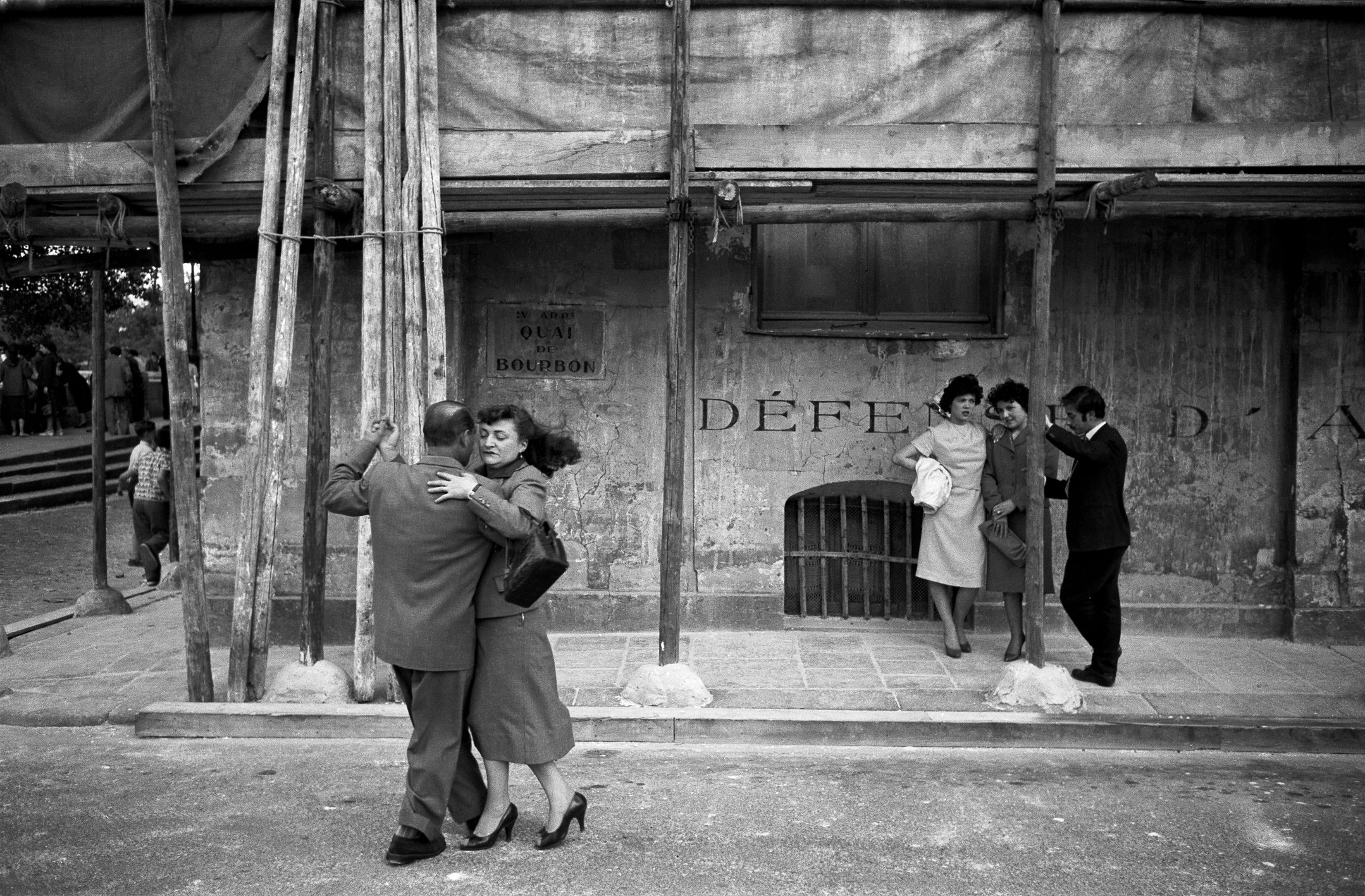
JOHAN VAN DER KEUKEN – FOURTEENTH OF JULY
Galerie &co119 is pleased to present the exhibition Quatorze Juillet by photographer and film-maker Johan van der Keuken.
July 14, 1958, the national holiday of France, Johan van der Keuken, 20, is in Paris. Quai de Bourbon, Ile Saint-Louis, Johan van der Keuken takes one of his most iconic photographs: a couple dancing. First published in his first book Paris Mortel, the image has since been widely reproduced. Besides this famous photo of the dancers taken on 14 July 1958, it came to light that the archives he left behind contained a great many negatives from this day. Today, 16 years after the death of the Dutch photographer and filmmaker, this exhibition reunites a selection of photographs from the contact sheet, that together capture an enthralling dance scene.
We encounter a couple, they dance, closely embrace, in a vertical image which isolates them from others. As Van der Keuken twirls around them photographing, the larger celebration is revealed. People chatter, peripheral extras become leading players and smaller narratives develop – a man approaches a group of young women, another walks through the onlookers carrying a long ladder, a car speeds around the corner whooshing through the crowd. Some start to dance, while others look on from the sidelines. We see girlfriends dancing together, older couples and children, too. Small flirtations take place and the photographer works like a fly on the wall – testing each frame and trying variations which, are as wonderful as the image he finally chose as “his best” from the day.
Since the start of his career, Johan van der Keuken — then primarily a photographer — was intrigued by the possibility of making manifest the dynamism in stationary images. He experimented with series of photographs, which he arranged to produce a “pictorial narrative”. He also combined dynamic, blurred images with static, sharply focused images, thus discovering how a chosen arrangement, a particular sequencing of stills, could accelerate their implicit dynamism or imbue them with another meaning.
The exhibition construction of a larger narrative proposes Van der Keuken's interest in “stills that move”, a curiosity that would later lead him into film-making.
————————————–
Galerie &co119 is pleased to present the exhibition – Quatorze Juillet by photographer and filmmaker Johan van der Keuken.
On July 14, 1958, Bastille Day, Johan van der Keuken, 20 years old, was in Paris. On the Quai de Bourbon, on the Île Saint-Louis, he took one of his most iconic photographs: a couple dancing. First published in his first book Paris Mortel, this image has since been widely reproduced. In addition to this famous photo, thirty-five negatives taken at the same time were found after his death. Today, 16 years after Johan Van der Keuken's death, this exhibition brings together a selection of photographs from the contact sheet that form a real "scene" of a popular dance.
We meet a couple, they are dancing. People are talking, characters from the periphery become leading actors and small scenes develop – a man approaches a group of young women, another crosses the square with a ladder on his shoulder. A convertible drives by. Two friends are dancing together, our couple on the edge of the sidewalk is chatting with a few acquaintances. Some start dancing, while others stand to the side and watch them. We see older couples, children. One could almost say that the photographer is participating in the dance, testing each frame and trying out variations, which are as strong as the image he finally chose as “his best” of the day.
Since the beginning of his career, Johan van der Keuken has been interested in the various possibilities of making movement visible in still images. In particular, he has played with series of photographs that he has combined in such a way that they create a "story in photos". He has also coupled blurred and moving images with sharp and still images. Out-of-focus movement shots with still and sharply focused images. He has discovered that the order chosen for such a photo montage could accelerate the movement contained in these images or give them another meaning.
In this exhibition the construction of a larger narrative suggests Van der Keuken's interest in “stills that move”, a curiosity that would later lead him to make films.